IL-20: Stormtrooper with extreme visibility
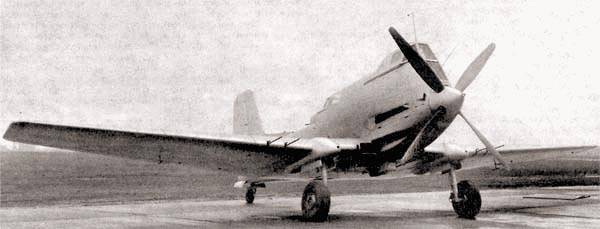
At the end of the 1930-x - the beginning of the 1940-s, the main and practically the only tactical tactic for attack aircraft was an attack from horizontal flight at extremely low altitudes (from a strafing flight). And at that time, and later - in the 1950-x, when designing single-engine attack aircraft using the traditional layout of their layout, the designers had to provide a fairly good forward-down view. For airplanes with air-cooled engines, this problem turned out to be particularly difficult.
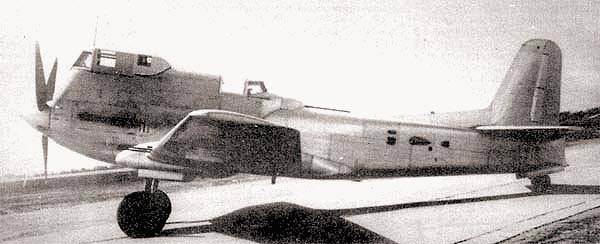
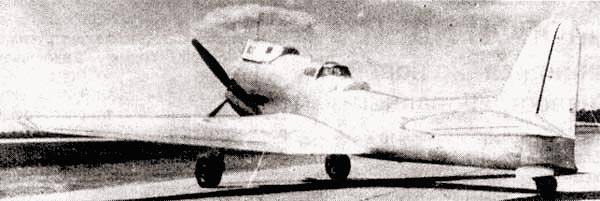
A review in this direction is necessary so that the pilot can quickly and correctly assess the situation on the battlefield, identify targets, determine the opposition of enemy ground weapons, select a target and maneuver for its attack, make aim, and have time to use the offensive weapons as efficiently as possible. Since attack aircraft were often used as light bombers, a good downward view, directly under the aircraft, was also important to ensure accurate bombing.
The angle of view of the TS-2 attack aircraft (the most visible among our first armored attack aircraft) did not even reach one degree. When flying at an altitude of 15 m, the pilot could see targets that were at a distance of at least 1000 meters ahead. This completely eliminated the shooting of machine guns.
When creating the Su-6 aircraft, in order to get a more or less satisfactory forward-down view, P.O. Sukhoi spent a long time looking for a place under the engine and carefully chose the contours of the engine hood.
S.V. Ilyushin to improve visibility on BSH-2 (IL-2) was forced to raise the seat of the pilot, lower the engine relative to the axis of the aircraft, pay much attention to the contours of the engine hood. As a result, he provided a forward-downward viewing angle of about 8 degrees.
All serial attack aircraft did not have a review down under the plane. The exception was IL-2, equipped with a special periscope, which, however, did not receive further distribution.
The way out was found using the time delay for dropping bombs, either with the help of special sights and temporary mechanisms, or by marking marks on the structural elements of the aircraft. Sometimes, in order to increase the effectiveness of the Il-2 aircraft from a strafing flight, it was necessary to make them “sighted” with the help of target airplanes for attack aircraft (STSUS). In this capacity, flight bombers and search for targets at medium altitudes, the SB, Pe-2 bombers, and subsequently the specially selected IL-2 crews were used. After the discovery of the object of attack, the navigator or pilot STSUS dropped bombs and thereby designated it.
At the beginning of the 1940-ies in the USSR, attempts were made repeatedly to create attack aircraft with improved forward-down visibility and the possibility of firing at targets in this sector with mobile cannon-machine gun installations. However, both the multipurpose single-seat aircraft of the “OPB” battlefield, designed by S.А. Arkhangelskogo, G.M. Mozharovsky, I.V. Venevidov, and armored attack aircraft "MS" S.V. Ilyushin, using unconventional design solutions, did not go into the series.
Development of attack aircraft IL-20
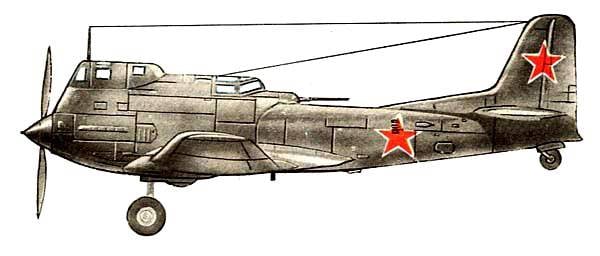
They returned to work in this direction only after the end of the war. In accordance with the Decree of the USSR Council of Ministers on 11 in March 1947, the Ilyushin Design Bureau was given the task of creating a new attack aircraft with slightly higher (compared to IL-10) flight data, more powerful cannon and missile weapons, and improved visibility and booking. At the end of 1947, the designers completed the development of a single-engine armored two-seater attack aircraft with a liquid cooling engine MF-45ш. The original layout was used, which provided an excellent forward-down view. Unusual and gun armament. The draft design of the IL-20 MF-45 aircraft was sent in February to 1948 at the Air Force Research Institute.
The USSR Council of Ministers resolution on the construction of prototypes of the Il-20 was adopted on 12 on June 1948. The conclusion on the draft design was approved on 19 on June of the same year by the Chief Air Force engineer I.V. Markov. Major engineer SGFrolov was appointed responsible for the aircraft. The purpose of the attack aircraft was formulated as follows: "To suppress and destroy manpower and technical equipment on the battlefield and in the tactical depth of the enemy's position." It was proposed to make two projects with different variants of offensive and defensive weapons.
Under the scheme, the first version of the aircraft was a low-winged liquid-cooled engine with a four-blade propeller with a diameter of 4,2 meters. The cockpit was located unusually - directly above the engine - and was pushed forward to the limit. The front of the cab was formed at an angle of 70. long windshield 100 mm thickness. One end of it almost rested against the bushing of the screw. This provided a forward-down view of the 37 degrees sector, and when diving at an angle of 40-45 degrees. the pilot could see targets that were almost directly under the plane. Behind the cockpit were oil and gas tanks. Behind them was the gunner’s cabin, remotely controlling the 23-mm cannon, housed in a special IL-WU-11 mobile unit with a hydraulic drive and a mechanism for bypassing the gun barrel along the fuselage and tail unit contour weapons).
The Il-VU-11 was designed by the Ilyushin Design Bureau. It provided large angles of fire in the upper part of the rear hemisphere: 80 degrees. - upward and 90 degrees. - right and left. The maximum speed of movement of the weapon in the mobile installation was 4-45 degrees / sec. Since the lower quarter of the hemisphere was completely unprotected by the gun mount, a cassette for 10 aviation grenade AG-2, thereby organizing partial protection.
The tail plumage was single-chin, the wing and horizontal plumage were trapezoid in plan. Water and oil radiators were located in the center section, the engine air intake was located in the lower part of the fuselage, in the area of the front wing trim.
The cockpit of the pilot and gunner, engine, fuel supply and lubrication systems, cooling system were inside the armored box. The total weight of metal armor was 1840 kg, and transparent - 169 kg. The cockpit had, in addition to the frontal, two side armored glass with a thickness of 65 mm and a rear armored glass, also 65-mm. In the upper part of the cabin from the sides of the lantern were armor plates with a thickness of 10 mm; the sides of the cockpit, the rear bulkhead behind the pilot were 10-mm, and in the upper part - 15-mm. The shooter behind and above was protected by 100-mm bulletproof glass, front upper sheet behind the gas tank and onboard 6-mm sheets, lower cabel armor sheet in 8 mm, upper and lower shielded armor 8 + 8 mm thick.
Motor booking included an armored car made of 6,8 and 12 mm thick sheets, which protects it well in front, bottom and sides. The top sheet of the gas tank with a thickness of 4 mm, the side sheets in 6 mm and the plates behind the tank in 10 mm completely covered it from those sides where there was no other armor protection. The radiators were covered from the sides with sheets in 4 mm, a radiator shield inside the motor armor in 6 mm, bottom armor plates 8 mm thick, and two 10 mm radiator armors. As you can see, the reservation was made exceptionally strong. It mainly provided protection against 12,7 mm bullets and, to a significant extent, against 20-mm aviation cannons. Compared to IL-10, the thickness of metal armor increased on average by 46%, and transparent - by 59%. The offensive weapons in the first version included two 23 mm caliber wing cannons for firing forward in a dive or planning and two 23-mm cannons mounted in the fuselage at an angle of 22 degrees. to the flight line - for firing targets with a strafing flight. The normal bomb load was 400 kg, while overload was 700 kg. Under the wing in the transshipment version, the suspension of four single-charge jet guns ORO-132 was provided.
In the second offensive version, it was planned to use one 45 caliber mm gun, two 23-mm guns and six ORO-132. The aircraft was equipped with a perfect flight and navigation and radio communications equipment, thermal de-icing system. This widened its use in bad ones.
In the conceptual design was developed and the second version of the defensive armament of the aircraft IL-20. There, instead of the upper IL-VU-11 installation, the IL-KU-8 mobile aft gun mount, located in the tail section of the aircraft, was used. It protected the aircraft in the rear hemisphere from enemy fighter attacks from all directions. In the IL-KU-8, the shooter at the rear was protected by bulletproof glass 100 mm thick, from the sides - by bulletproof glass in 65 mm. Curved along the contour of the rifle installation, armor 10 mm thick, side 6-mm and rear 4-mm armor plates provided reliable protection for the shooter in this variant.
The idea remained unrealized.
Despite a number of original ideas, the draft design of the IL-20 was rejected as inconsistent with the decision of the USSR Council of Ministers and the tactical and technical requirements. This concerned the basic flight data and weapons.
The main drawback was the low flight speed of the aircraft, which turned out to be even lower than that of the serial IL-10. Offensive weapons also did not satisfy the customer.
It was noted that the fire power of the IL-20 is less than that of the IL-10. At the same time, it was possible to fire only from two cannons - either wing or fuselage. The expediency of applying the latter was not in doubt, but there was a desire to have mobile units. Along the way, we say that quite successful developments in this field that were already available at that time were G.M. Mozharovsky and I.V. Venevidov were not used. When loading PTAB, the bomb load was only 300 kg.
A significant increase in the midsection of the fuselage and its lateral surface led to a deterioration in the aerodynamics of the aircraft, an increase in the flight weight, and an increase in the possibility of enemy fire damage. Since the distribution of the armor installed on the aircraft was carried out over a large surface, the experts of the Air Force Scientific Research Institute did not see an improvement in booking compared to the IL-10. Extremely complicated operation of the VMG due to irrational ways of approaching the motor and its units. With all the work related to the shooting of blocks or their covers, it was necessary to disassemble the engine itself from the aircraft. All work on the motor mechanic had to perform in the upside down position. The pilot got into the cockpit only when the engine was not running. At emergency leaving there was a danger of getting under the screw.
The main positive factor was considered only an excellent forward-down view (although only in a very narrow sector). The overview to the side and forward was the same as that of the IL-10.
The layout of the IL-20 was presented to the mockup commission in July 1948. In the protocol, which was approved by 21 July 1948, Air Force Marshal K.A. Vershinin, the motor was already called M-47. The model in the variant with IL-VU-11 was declared incomplete. The review down-to-side turned out to be worse than the IL-10. The cab was located too close to the propeller, which is unsafe when it was left, and during an emergency landing, the propeller blades are likely to be damaged by the propeller blades. There was no emergency reset of the flashlight and protective anti-coiling device. The layout scheme complicated operation.
Among the positive qualities, there was an excellent forward-down view and the presence of guns firing at an angle downward and giving the opportunity to attack area targets from horizontal flight at altitudes from ramming flight to 700-800 meters.
The Commander-in-Chief of the Air Force did not consider the construction of the IL-20 necessary until the final approval of the layout. However, the aircraft in the first version produced. He had four movable wing 23-mm guns W-3 designed by B.G. Spit with 900 ammunition shells. In the IL-VU-11 mounted mobile gun W-3 with ammunition 200 shells.
Factory tests began on November 20 1948 g. The first flight at the beginning of December 1948 was made by the pilot V.K. Kokkinaki. During the test, the aircraft showed the maximum flight speed of all 515 km / h at an altitude of 2800 meters. Due to low flight data, failure to comply with the requirements for armament and the lack of knowledge of the M-47 engine designed by M.R. Fleece work on IL-20 in accordance with the Decree of the Council of Ministers of the USSR dated 14 in May 1949 was stopped.
The plane was examined by the deputy commander for combat training and noted the following shortcomings:
• cockpit and arrow split fuel tank;
• dive issues not worked out;
• the effectiveness of fire extinguishing in the area of the gas tank was not ensured;
• installed four guns ahead instead of six, and others.
S.V. Ilyushin worked out two more (except for those already discussed above) variants of the Il-20, with an IL-10 arrangement, the flight data of which was slightly higher. But all this remains unrealized.
The final attempt to create an attack aircraft with an improved forward-down view was the conceptual design of the Sh-218 armored two-seater attack aircraft with a powerful X-shaped motor M-251 designed by SM Alekseev. But its characteristics were considered unsatisfactory.
Thus, a fairly good overview of the forward-down single-engine attack aircraft could not be obtained. In the IL-20 aircraft with the M-47 engine, this was achieved at the cost of a loss in many other parameters, which prevented the car from being taken into the series. It can be concluded: the hope to solve the problem of a forward-down review due to unconventional layouts of single-engine attack aircraft did not materialize.
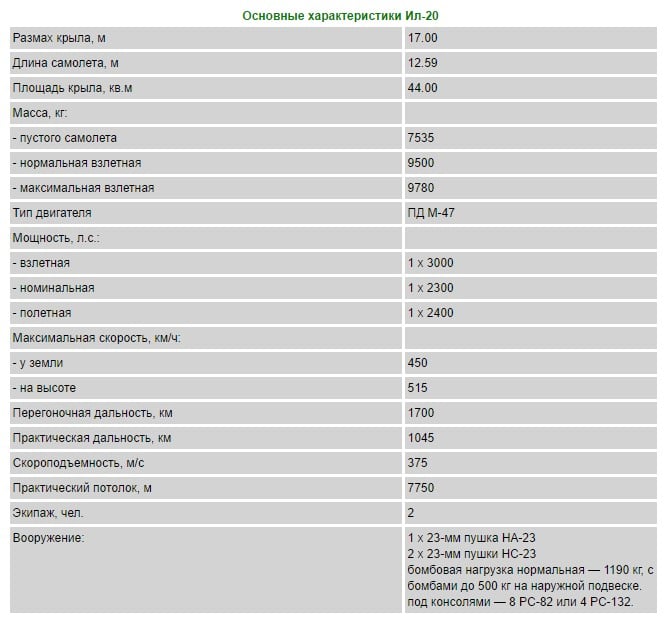
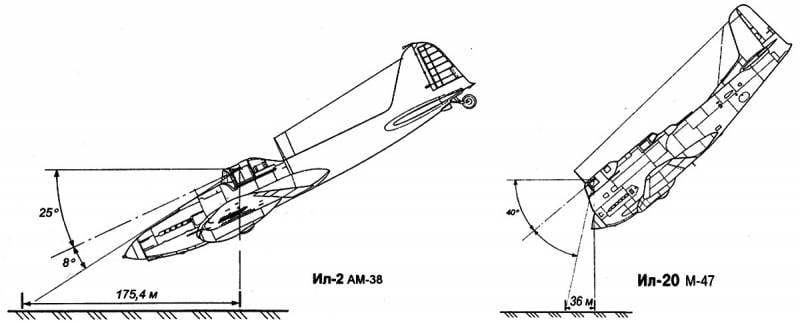
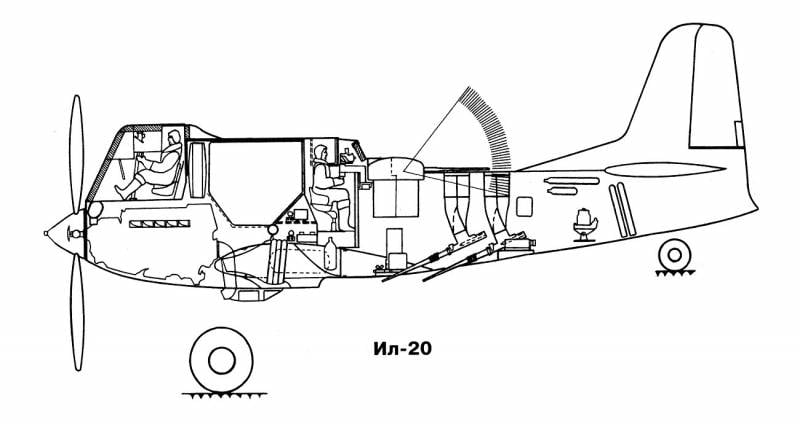
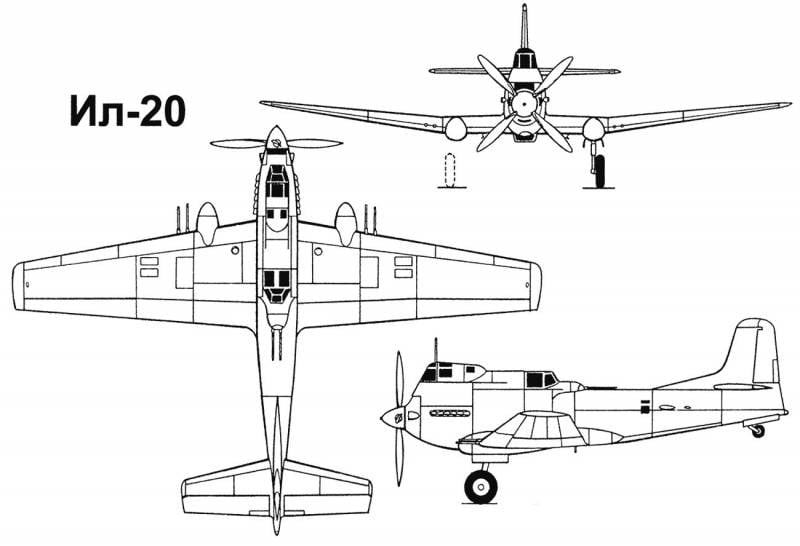
Information